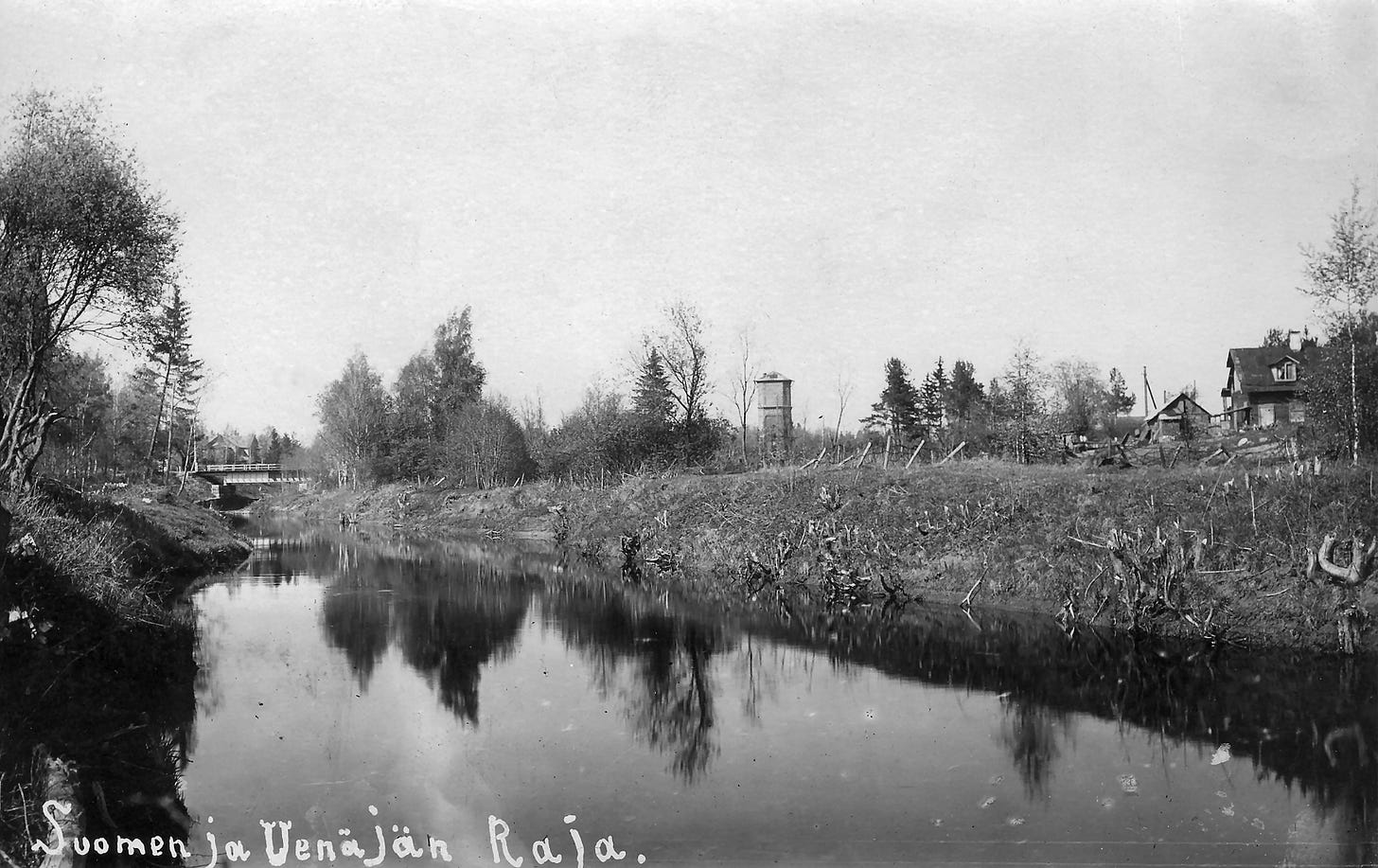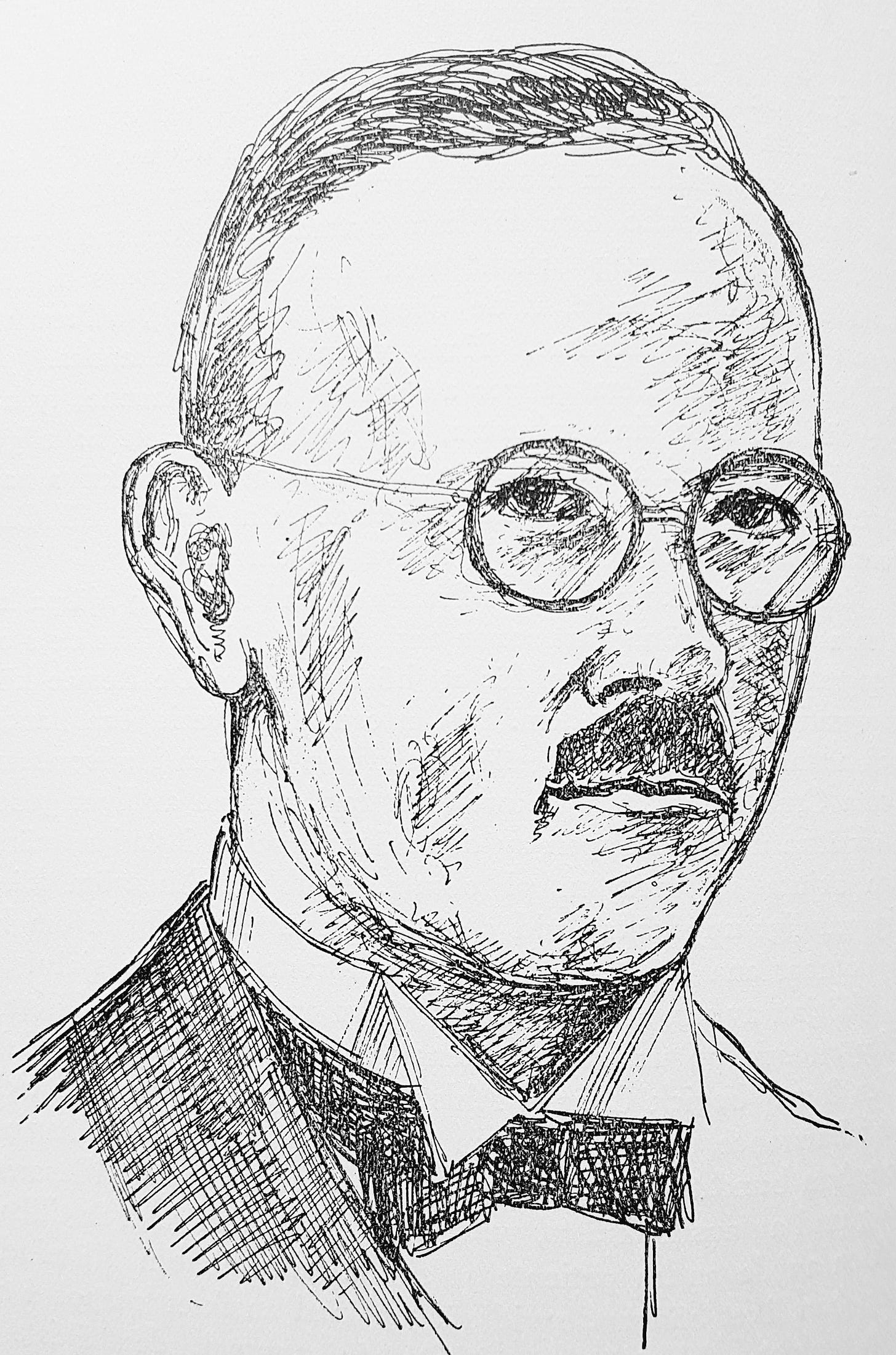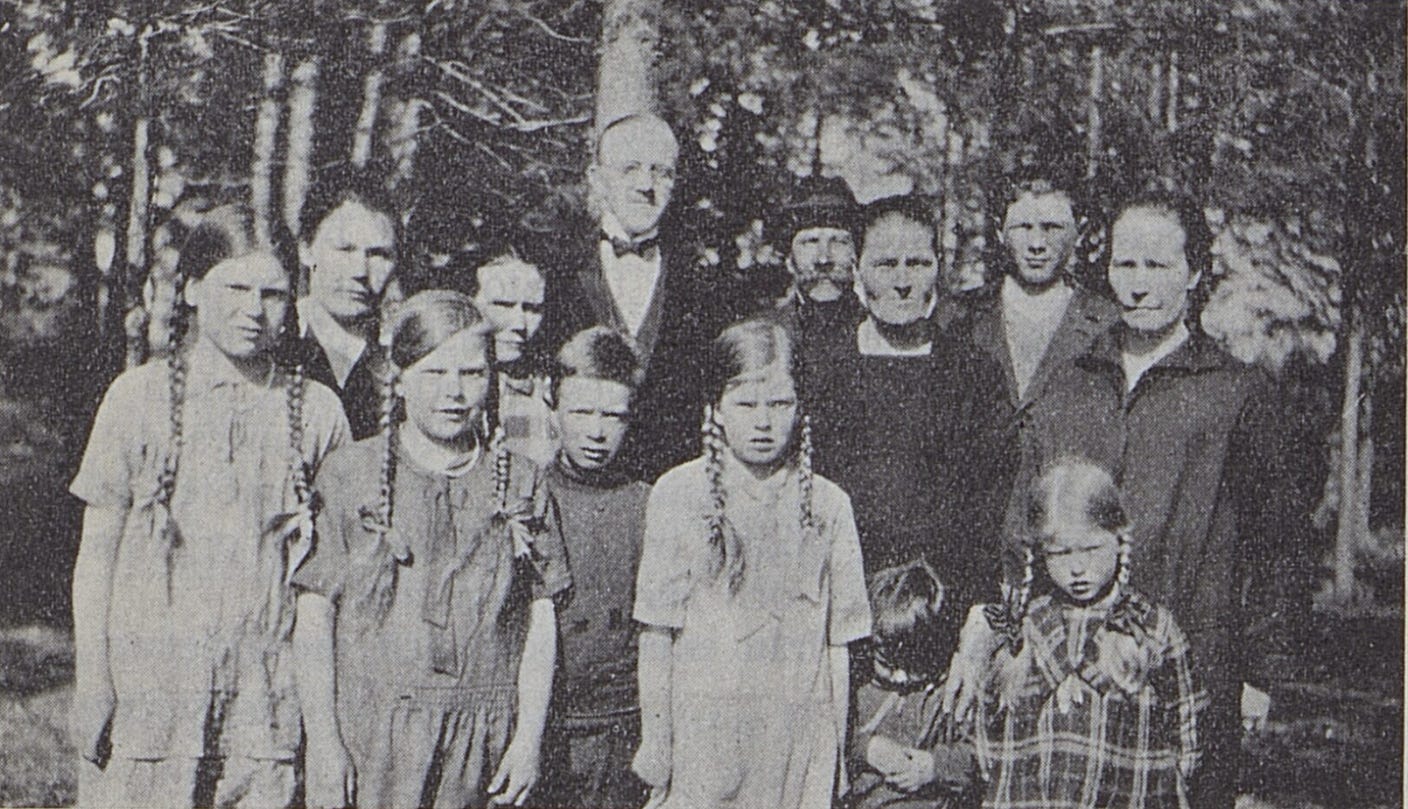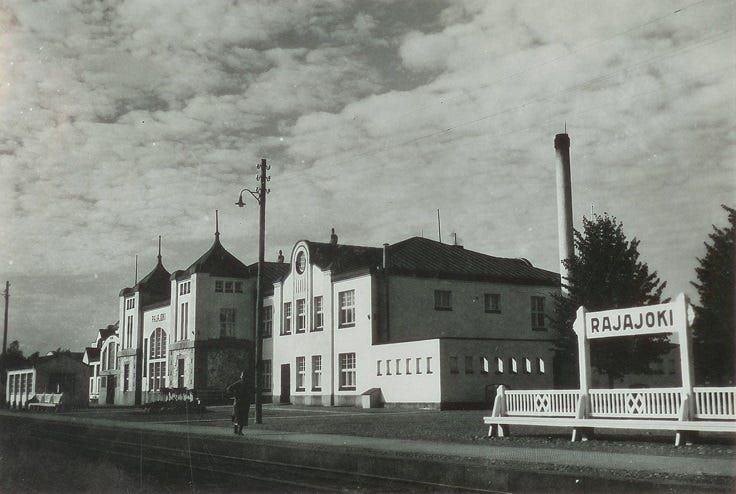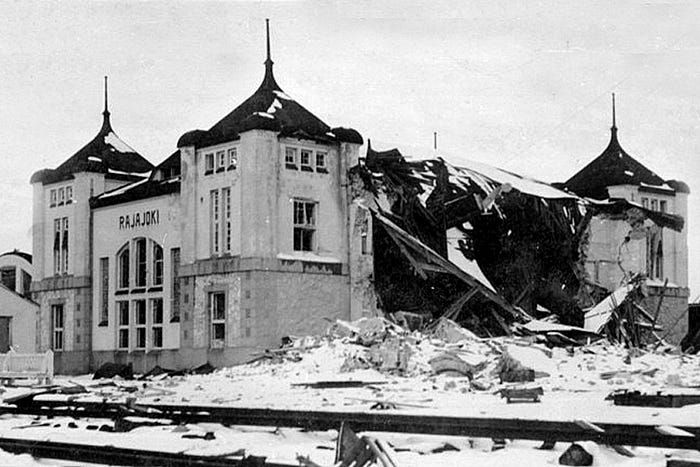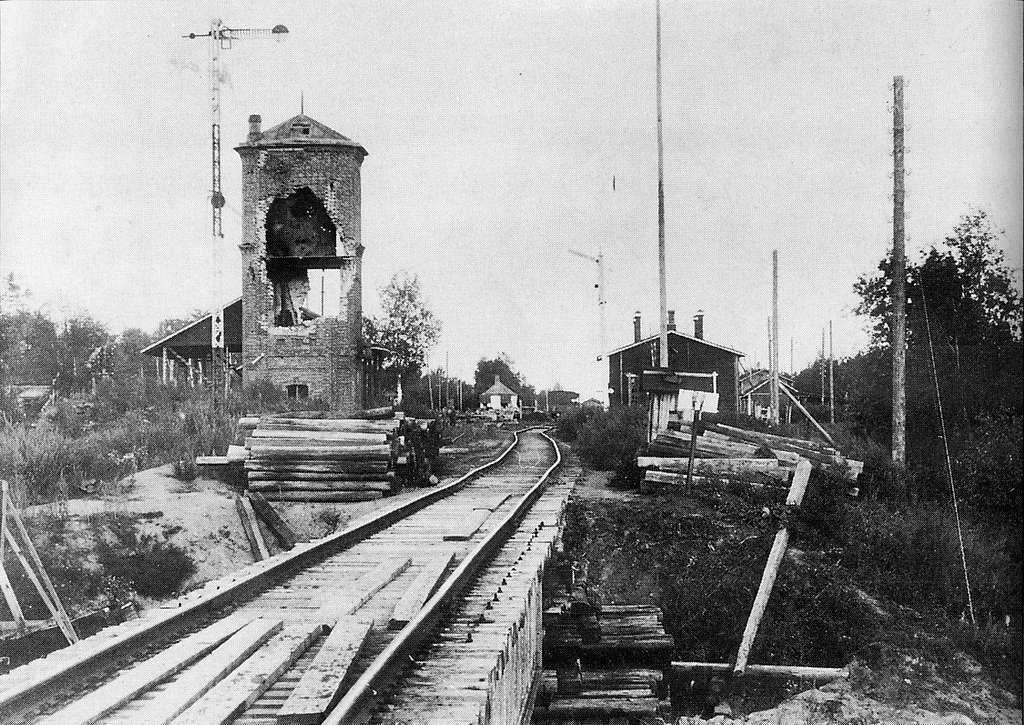"the Russian red flag was flying high in the sky"
Gideon Hulterstrom's arrival at Rajajoki in 1929
The Sestra is a river that runs across the Karelian Isthmus in Northern Europe. For many years it served as a natural border between Finland and Russia. In the winter of 1939-40, Soviet forces invaded Finland. After a costly and destructive 3.5 months, the Soviet Union and Finland signed a peace deal which saw most of Finland’s Karelia region being surrendered to the Soviets.
The region, however, also features briefly in Latter-day Saint history. In May 1929, the Swedish mission was presided over by Gideon Hulterstrom who had been serving in that capacity since late 1927 on what was now his third mission. A quick assessment of Gideon’s mission reveals that he was passionate about providing members of the mission with the same opportunities and organisational structures, such as Primaries and Genealogical Societies, that were found in North America. In recent months the mission had also enjoyed some good news. There was a marked improvement in publicity and public opinion, new meeting places, and there had been a promising increase in the number of baptisms.1 However, although most of the mission’s efforts were focused on Sweden, there were some Latter-day Saints living in Finland and the Soviet Union.
Gideon Hulterstrom was a Swede by birth and had been baptised a member of The Church of Jesus Christ of Latter-day Saints in 1894 at age 8 after his father and stepmother joined the Church in Eskilstuna. Eight years later he emigrated to Utah with his younger brother as part of a group of emigrating Saints. In America, Gideon met and married Signe Lindskog, a fellow Swede, in August 1908. A month later he set off on a mission to Sweden where he served for three years. A second mission for three years followed in 1920 and then in 1927 he was called as president of the Swedish Mission where he would serve for five years.
In May 1929, Gideon undertook a trip to Finland and to the Soviet Union. He had been requested by Apostle John A. Widtsoe, a fellow Scandinavian by birth, to visit the Saints in those areas. Elder Widtsoe was planning on being in the Swedish Mission in June 1929 and presumably wanted an update on the members and the conditions for the work in those areas.
When Gideon arrived in Finland on the afternoon of the 11th May it had been fifteen years since the members had been visited by a missionary. His suitcase, which was almost entirely filled with church publications, caused some interest from the customs and immigration officials, but he was permitted into the country ninetheless. The only contact the Finnish Saints generally had with the Church was through the mission magazine, Nordstjarnan, which they received twice a month.2 They were thrilled to have him there.
After arriving in Turku Gideon took a seventeen-hour train north to Jakobstad with several small stops along the way. In Jakobstad he met with Viktor Berg and Anselm Stromberg, who were faithful members of the church. All members in Finland had been, with only one exception, born in Finland, but all spoke Swedish. Gideon described their Swedish pronunciation as having a Finnish dialect, “but you understand them quite well.”
From Jakobsberg, Gideon and a group of Saints drove by car to Larsmo where he met Saints gathered in the home of Anna Stromberg. He joined them for dinner when they began planning upcoming meetings during his stay. Five meetings were organised and a school hall was secured for Gideon to use free of charge. More than 100 people attended the meeting and others held nearby were also well attended.
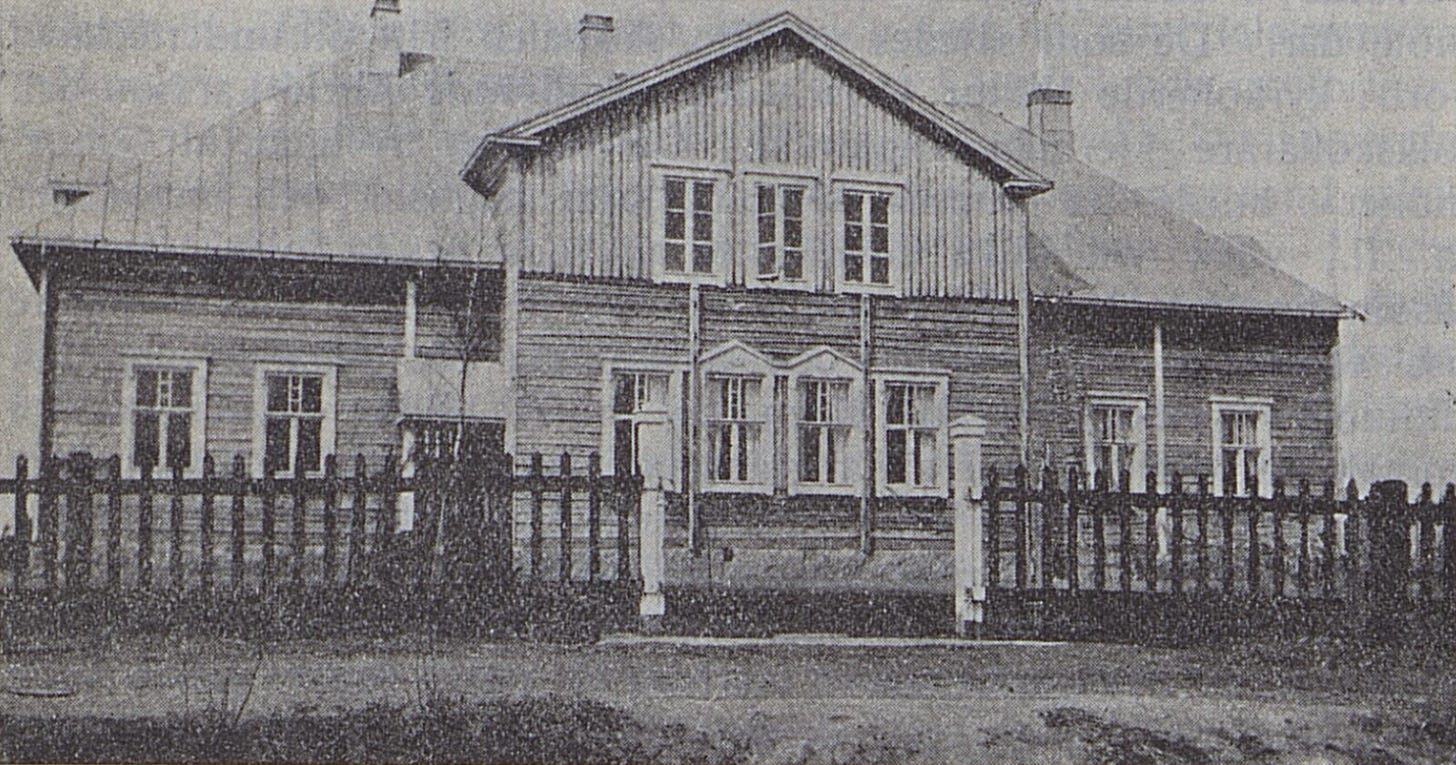
Larsmo was a small place, with a population of only 2,700, and members of the Church had been present there since 1880. Gideon noted that approximately 1.1 million of Finland’s 3.3 million population were Swedish. He was optimistic that Swedish-speaking missionaries would be able to accomplish much good there.
After the meetings in Jakobstad and Larsmo Gideon headed south on the train passing through places such as Bennas, Seinajoki, Tampere, Hameenlinna, and Kerava before arriving at Helsinki. It was in Helsinki that Gideon met with Johan and Alma Lindlov, an elderly Finnish couple that had lived in Leninburg, Soviet Union, for 55 years. It was only recently that they had returned to Finland after having “endured unspeakable persecution.”
At a church meeting the Lindlovs’ shared their story and bore powerful testimonies which impacted Gideon who described himself as having been moved by their faith. The revolution of 1917 had been a terrible hardship for the Lindovs who had been Latter-day Saints since 1895. Gideon recorded the following about the Lindlovs in a letter concerning his trip:
Often enough arrests occurred in the middle of the night and one night at three o’clock Russian soldiers came to brother Lindlov’s home to arrest them. The couple escaped [punishment] but three of the children were taken from them. The youngest son was sentenced to four months penal servitude and the eldest son to fourteen months. Their 24-year-old daughter was sent to a place near the Artic Ocean, in the company of other women and men, where they were forced to do penal labor such as to load wagons with sand and stone. The hardships she endured here and then the scarce food they received had serious consequences. She suffered from a serious illness and died completely unexpectedly. Likewise, the youngest son died of grief and illness, due to the inhuman prison sentence he was sentenced to without the slightest reason. The eldest son went through what he was forced to do and was finally set free. Like his other relatives, he had his request granted to leave Russia and then moved to Halsingfors, Finland….After many years of difficult hardships, life now seems completely different from what it used to be for brother and sister Lindlov and their family, even if they do not enjoy such a modern home as they once had. However, they now enjoy more peace and quiet in their old age.
The Lindlov’s story was a tragic one. Their wealth and success in the Soviet Union had caused them trouble and in turn the loss of two of their children. The Lindlovs’ remained in Finland where they both died more than ten years later during World War 2. Gideon kept himself busy while he was in Helsinki. On one trip he gifted a copy of the Book of Mormon and two other Church books to the city library which were gratefully received. On 21 May, Gideon undertook a trip west of Helsinki to a rural area where a member family lived. The Sjoberg family were thrilled to see a missionary and there was joy on both sides. Gideon performed some ordinances. Herman and Hannah Sjoberg’s eldest son, Fritiof, was baptised, and other children were blessed. Before long, however, he returned to Helsinki to begin his trip to the Soviet Union.
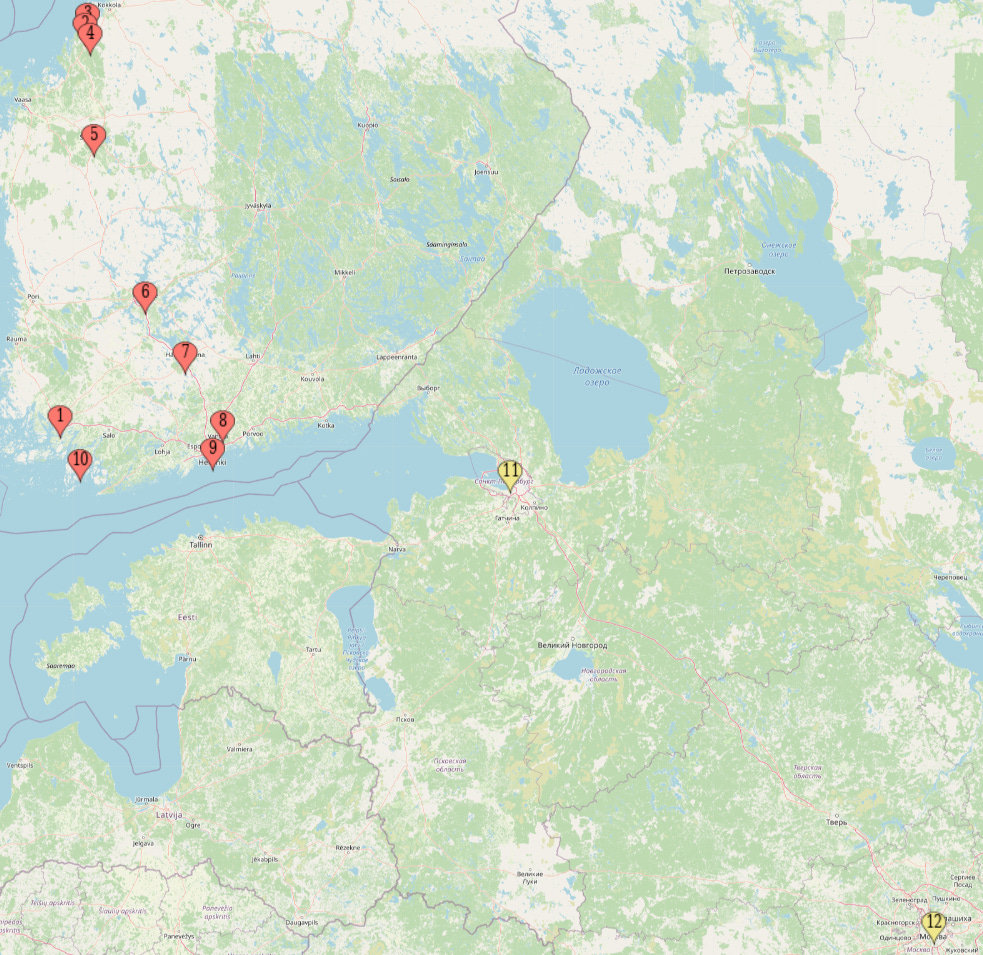
Key
Turku
Jakobstad
Larsmo
Bennas
Seinajoki
Tampere
Hameenlinna
Kerava
Helsinki
Portsnas
Leningrad
Moscow
As the train trundled its way through Finland Gideon likely watched as villages and small towns interspersed with scenic forests and still lakes passed by. What would happen in the Soviet Union? Had the time come for the work to expand there? At this point, Gideon was far beyond the borders of the Church’s established presence seeking to visit the scattered sheep.
At Rajajoki, a Soviet border town, Gideon disembarked the train. This was his last opportunity to secure entry into the country. In early April 1929, Gideon had requested a visa from the Soviet Union’s consulate. As he was an American citizen, however, he had to receive special permission from the government in Moscow. He was told an answer would arrive in fourteen days but it never came. Gideon went to the consulate again and was informed that a decision would be sent to the Soviet consulate in Helsinki. But once again Gideon was let down. Telegrams yielded no permissions and he was running out of options. Gideon’s final option was to travel to the border of Finland and the Soviet Union, where he could try to obtain a visa.
The border town of Rajajoki was patrolled by armed Soviet soldiers. It consisted of a train station and very little else. According to Gideon “the Russian red flag was flying high in the sky.” Unfortunately for Gideon, the officials considered him to be a spy and swiftly refused him entry into the country. What followed was a difficult and hard experience for him.
Gideon was unable to speak Russian, and the guards could speak neither Swedish nor English. Without a visa, Gideon could not continue the journey and would need to return to Helsinki and then back to Sweden. The difficulty, however, was with the trains. There was no return train until that evening. Gideon was forced to spend the rest of the day waiting, probably pacing the area, until the train arrived. The armed guards, suspicious of his motives, likely kept him under surveillance until he left. Gideon later noted more about this event:
Considering the warning Brother Lindlov gave, I feared being arrested, but through God’s protection, everything went well until the return journey took place. Something else about this may not be said in this letter.3
Despite his fears, he was not arrested and was instead able to return back to Helsinki. It had been a waste of time and money, but at least he was still free. Other travelers had shared stories with him of being also being refused entry or being arrested, but at least he still had his liberty.
Although he was unable to travel to the Soviet Union he decided to send the Book of Mormon and other books to the city library in Moscow. How they were received is unknown. Ultimately, the results of the trip to Finland and the Soviet Union were mixed. As one account noted:
Seven meetings were held, five children were blessed, six persons were baptised, two ordinations were performed, an organisation was established, and many books, booklets and pamphlets were distributed.
Back in Helsinki Gideon learned that he was being messed around by the authorities who were seeking to make it difficult for him, knowing that he would soon have to return to Sweden. Eventually, he opted to move on and adjusted his plans accordingly. Although the trip to the Soviet Union had not worked as planned, he still managed to share literature with the Moscow city library and a great work had been accomplished in Finland. It would be almost another twenty years before Finland was dedicated for the preaching of the gospel by Elder Ezra Taft Benson, but the faithful Saints held on, buoyed by occasional visits such as Gideons. Rajajoki was destroyed during the 1939-1940 ‘Winter War’ and abandoned by the Russians. Today all that remains are some ruins of where the border once stood and where the hopes of an ambitious mission president were thwarted.
On his return to Stockholm, Gideon sent a letter out to all of the missionaries. Part of the letter talked about the arrival of Apostle John A. Widtsoe who was there to tour the mission while another section praised the missionaries for their hard work. The best news, however, came at the end. Missionaries throughout the Church were no longer expected to sell their missionary tracts and would be provided them free of charge to distribute.4
Bit by bit, the church was becoming larger, stronger, and more capable. Not having to sell literature to interested persons would make it much easier to share gospel materials and to help fulfill their commission to preach and teach Jesus Christ throughout the world. Naturally, other developments would follow over the years. Finally, in the 1990s missionaries were granted permission to live and serve in Russia, which was a complete transformation from Gideon’s experience some sixty years earlier. The history of the Church in Russia is complicated, but today there are many committed Russian Latter-day Saints who live their faith while navigating the political, cultural, and social conditions of their country.
Letter from Gideon Hulterstrom to the missionaries of the Swedish Mission, 28 November 1928, MS 26505, bx. 1, fd. 12, CHL.
Gideon Hulterstrom, ‘Editorial,’ Nordstjarnan, Vol. 53, No. 13 (1929), p. 184.
Gideon Hulterstrom, ‘Editorial,’ Nordstjarnan, Vol. 53, No. 13 (1929), p. 184.
Letter from Gideon Hulterstrom to the missionaries of the Swedish Mission, 29 June 1929. Copy in possession of author.


